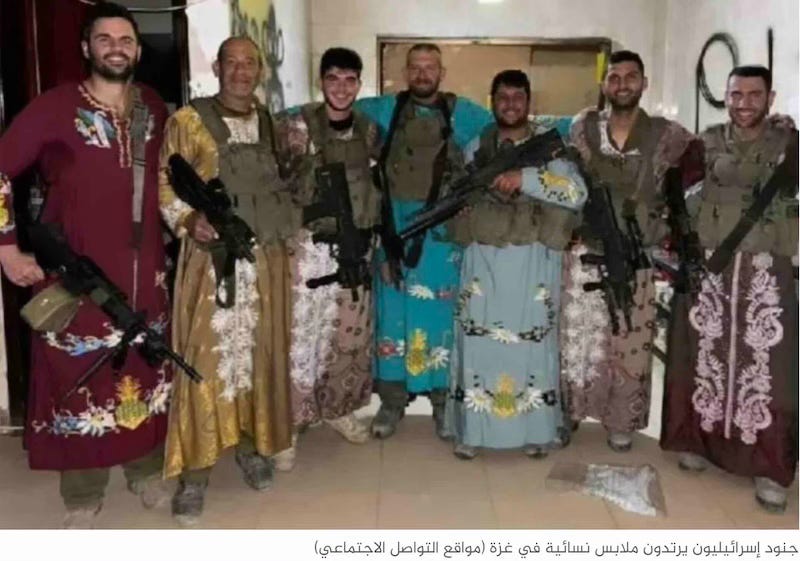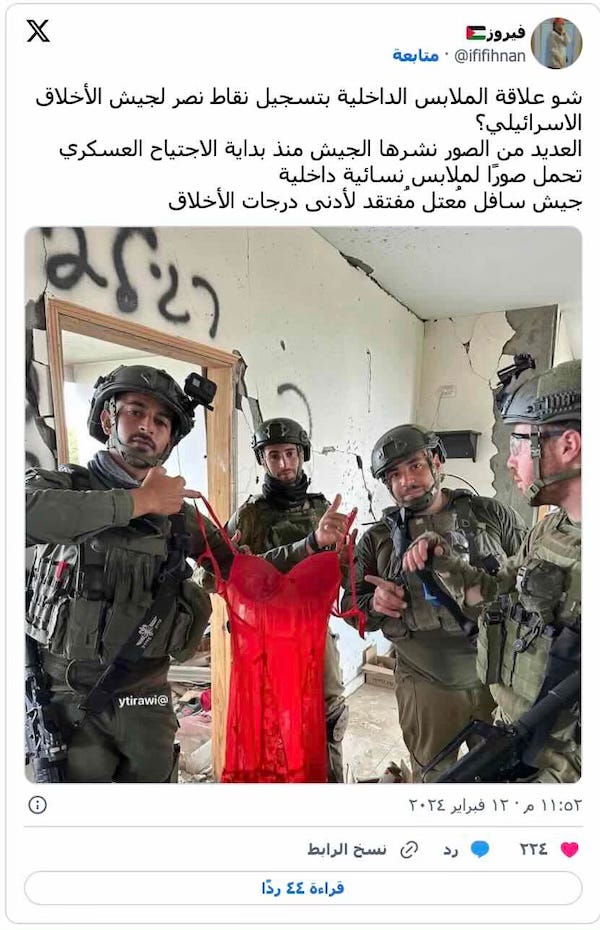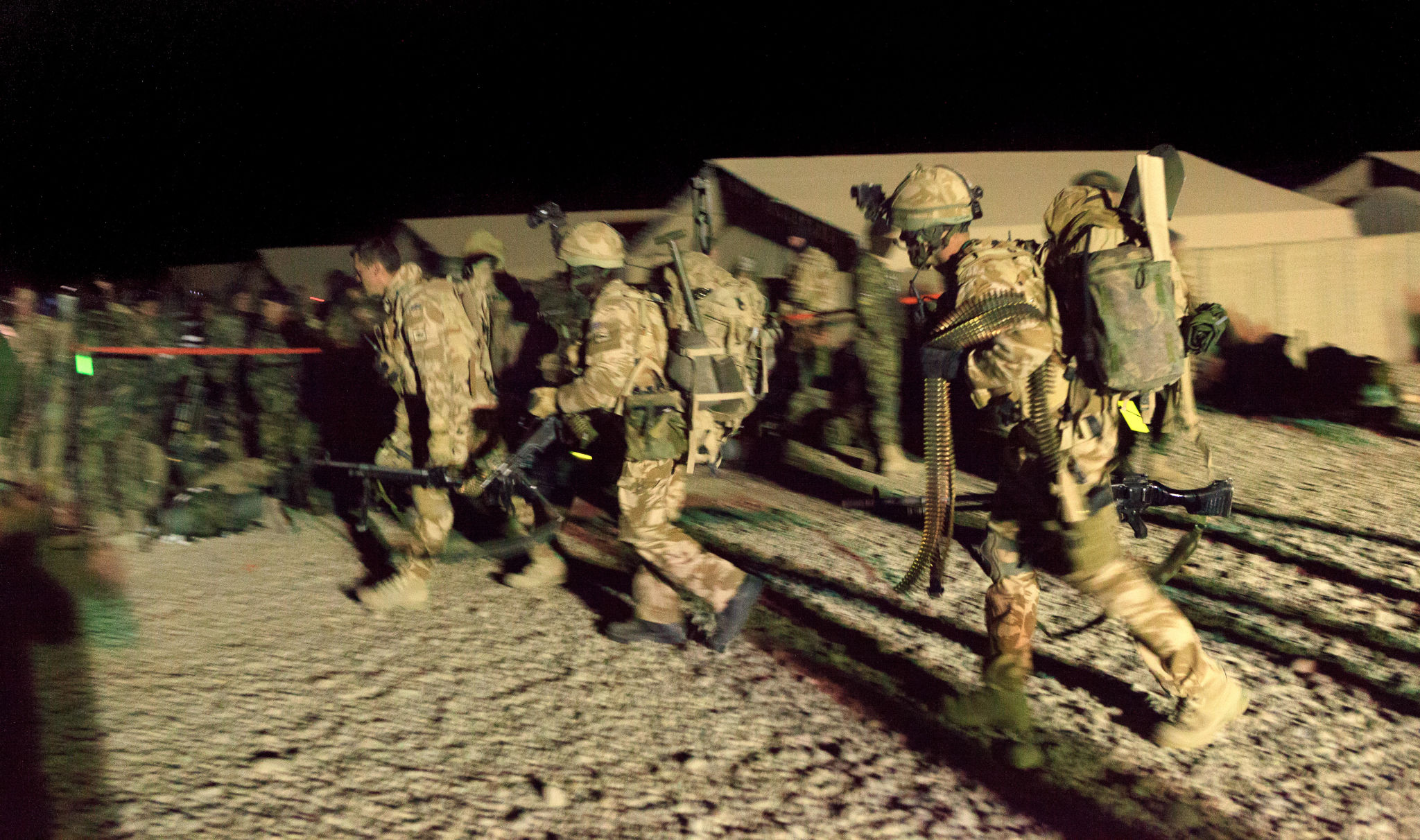Note: I was just de-banked by Stripe—all Substack income removed. Please donate HERE.
In this week’s False Flag Weekly News, Cat McGuire and I discuss the election and other pressing concerns—including my loss of over three-quarters of my income a few days ago when Stripe de-banked me. That means paid subscribers to this Substack are no longer paying. (Stripe is Substack’s only payment processor.)
If you want me to keep doing this work, and indeed, to continue to access food, shelter, and cat food for Muse, please donate to my Paypal donation page. Recurring donations are especially appreciated. I assume the Zionist genocide perps are trying to cut off my Paypal, too, but it may take them awhile, since I’ve been a customer in good standing for 20 years, so please, use that Paypal donation page while you can! And if you can recommend a free speech payment processor, and/or the most user-friendly non-Zionist Bitcoin app, please drop a comment below.
This Substack will continue as usual, with all content free for everyone. I hope Substack will eventually find an alternative to genocide-supporting Stripe. Meanwhile, once again, the Zios have really pissed me off and rekindled my enthusiasm for (verbally) fighting them to the death.
-Kevin Barrett
Israeli soldiers are notorious cowards. They are good at murdering women and children, and then posing in the clothing of the women and children they just murdered. But when an armed opponent fights back, they soil their panties.
Israel is facing total humiliation in Gaza, where its pusillanimous pussies posing as soldiers haven’t even come close to “eliminating Hamas” or “recovering the hostages.” And now the Entity is facing an even more catastrophic defeat in Lebanon, where IDF forces keep getting routed by Hezbollah and can’t advance more than a kilometer or so past the border.
Is there a connection between Israelis’ legendary cowardice and their propensity for camping around in ladies’ underwear and posting the images on social media? What exactly are they trying to accomplish? According to al-Jazeera journalist Hussein Jelaad the Israelis aren’t just effeminate chickenhawks, they are effeminate sadists, and their actions are war crimes.
Normally I hate facial recognition technology. But now I am starting to see a use for it. We need a database of every Israeli who has been photographed committing a war crime, and an app to alert us when such a person comes within renditioning distance.
Israeli soldiers in women’s clothing… What’s behind the pictures?
Social media is filled with images of Israeli soldiers documenting their crimes, whether in Gaza or southern Lebanon. While images of war crimes in the past appeared in the form of leaks, as in the Abu Ghraib prison incident in Iraq, Israel’s war is public in all its details. They commit their atrocities, document them, and then brag about them.
Perhaps the strangest thing that Israeli soldiers have come up with is their boasting about wearing women’s clothes in Gaza and Lebanon. Photos and videos show Israeli soldiers bragging while inside the homes of Palestinian or Lebanese families after killing them or displacing their families, as the soldiers search the closets and wear housewives’ clothes, and even children’s clothes in some cases.
The burning question is: Why do the soldiers do this? Is it an individual phenomenon? Or is it part of the ideological structure of the army that claims to be the most moral in the world? And what does international and humanitarian law say about such practices?
An analysis of these images in homes that were stormed during armed conflicts reveals complex psychological and social dimensions, indicating an aggressive style that involves mockery and humiliation. This behavior carries deep connotations related to the concept of power and control, as the occupation army aims to humiliate the displaced and occupied community and rob it of its cultural symbols and dignity, using psychological mechanisms that aim to destroy the morale of the victims.
What do the pictures say?
Analyzing these images from a psychological and social perspective reveals several dimensions related to the behavior of Israeli soldiers in situations of occupation and aggression, as well as the effects of power and conflict on human behavior. A deep look into the meanings of these images reveals several things:
*Expression of power and control: Wearing women’s clothing in raided homes may be a sarcastic expression of power and control, and is intended to send a message to the displaced that they are being ridiculed, and that their privacy and property have been taken over without any respect. This behavior reflects a kind of cultural superiority and an attempt to undermine the dignity of the original owners of the place.
*Humiliation of the victim and dehumanization: In such conflicts, some soldiers may resort to behaviors that aim to humiliate and despise the victims, as part of psychological warfare. Dressing victims in women’s clothing is an attempt to show military superiority by insulting the moral and cultural aspect of the victim, so that the displaced person feels that even his clothes and privacy are no longer safe.
*Relief from psychological stress: Soldiers participating in conflicts often resort to unusual behaviors as a means of relieving the tension resulting from war and the psychological pressures associated with it. Sarcasm and humor may be used as a psychological defense mechanism to alleviate feelings of fear or guilt.
*Photographing for media impact: Taking and publishing such images represents a deliberate attempt to achieve media impact, as soldiers, or those publishing the pictures, seek to reinforce an image of strength and disdain for the occupied society to their audience, which can be used to create a sense of superiority and indifference to the human suffering of the victims.
*Use of cultural symbolism: In Arab cultures, women’s clothing symbolizes honor and chastity, and here it is used as a tool of ridicule, reflecting an attempt to manipulate and exploit cultural symbols for the sake of humiliation.
In general, this behavior shows contempt for the victims, and reveals how armed conflict can lead to the normalization of humiliating and inhumane behaviors by the occupying army, and it undoubtedly reveals a sadistic tendency devoid of any human sympathy.
Are there similar practices that have occurred in other places in the world that are similar or close to them?
Seeing images of Israeli soldiers during the aggression on Gaza and Lebanon carrying out these inhumane practices brings to mind similar images and practices related to mocking or humiliating the local population and despising their cultural symbols that have appeared in several conflict zones around the world, and are considered psychological warfare that aims to undermine the morale of occupied or targeted societies. Here are some examples:
1- The Iraq War (2003-2011): During the American invasion of Iraq, images appeared of American soldiers in Abu Ghraib prison torturing and humiliating Iraqi prisoners in horrific ways, including forcing them into embarrassing positions or mocking them. These images were part of a humiliation and psychological torture campaign aimed at breaking the morale of the prisoners and Iraqi society in general, and they sparked widespread international condemnation.
2- Bosnian War (1992-1995): During the Bosnian War, Bosnian Muslims were subjected to genocide by Serbian forces, where villages were stormed and the population was terrorized, women were subjected to systematic attacks, and cultural symbols were used as a means of humiliation. These actions were aimed at humiliation and psychological torture, as Muslim rituals, customs, and religious symbols were targeted as part of the ethnic cleansing process.
3- Israeli Occupation Army: In several documented cases, Israeli soldiers vandalized Palestinian homes, wrote insulting messages on walls, or defaced religious and cultural symbols of Palestinian society. These actions usually included behaviors that challenged the sanctity of Palestinian homes and private property and aimed to break their morale and demonstrate the control of the soldiers.
4- South Africa (Apartheid System): During the apartheid era, similar means of psychological humiliation were used, as soldiers or police treated black residents in ways aimed at humiliating them and stripping them of their dignity, including destroying their homes or entering them without permission. The aim was to instill a sense of helplessness and inferiority in the black population.
5- The Algerian War (1954-1962): During the French occupation of Algeria, many Algerians were subjected to systematic humiliation and repression, including the invasion of their homes and the mockery of their traditions. French forces destroyed villages and defaced Algerian cultural and religious symbols as part of a policy of psychological pressure and breaking the will to resist.
In all of these cases, mocking local culture or symbols was a means of enhancing psychological control and perpetuating a sense of defeat among the targeted population, demonstrating the extent to which conflicts can reach extreme levels of cruelty and psychological violence, beyond direct military confrontations
Is such Israeli soldiers’ behavior considered contrary to international law and humanitarian norms?
Reviewing the relevant legal materials, it is certain that the behavior of the Israeli soldiers as shown in the photos is contrary to international law and humanitarian norms in several respects. There are international laws and standards that regulate the behavior of military forces during armed conflicts, and aim to protect the rights of civilians and preserve their dignity. Among these laws are:
*The Geneva Conventions (1949): The Geneva Conventions, particularly the First Protocol thereto, provide for the protection of civilians from any violation of their dignity, including insults, mockery and degrading treatment. Any act that involves harming civilians or their property or violating their privacy is a violation of these conventions. Article 27 of the Fourth Convention specifically requires “respect for the honour and rights of the family” and prohibits any act that is considered degrading to civilians, such as tampering with their property or desecrating their cultural symbols.
*International Human Rights Law: International human rights law emphasizes the protection of human dignity, and any act that is degrading or offensive to a person or community is considered an attack on their dignity and a violation of their rights. Actions that involve ridiculing the clothing or personal belongings of victims are considered an expression of an attack on personal dignity.
*Humanitarian and moral norms: Targeting and ridiculing private property, especially women’s symbolic clothing or cultural symbols, is considered immoral behavior and violates humanitarian norms that call for respect for people’s dignity, even in the context of war. International Criminal Court: In some cases, such acts may be considered war crimes if they are part of a systematic policy or conduct to humiliate or forcibly displace a civilian population. The International Criminal Court considers insults and outrages upon dignity, whether physical or mental, to be among the acts that may be considered war crimes under Article 8 of its Statute.
*International Committee of the Red Cross (ICRC): The ICRC defines such practices as a breach of military ethics, which obliges members of armed forces to respect the dignity of civilians and not to engage in degrading or inhumane conduct.
In summary, the actions of Israeli soldiers, which involve mocking the clothing and private property of Palestinian and Lebanese civilians, are contrary to international law and humanitarian norms, and can be considered a violation of human dignity and the rights of civilians in the context of armed conflict.
Note: I was just de-banked by Stripe—all Substack income removed. Please donate HERE.

 RSS
RSS






Geen opmerkingen:
Een reactie posten